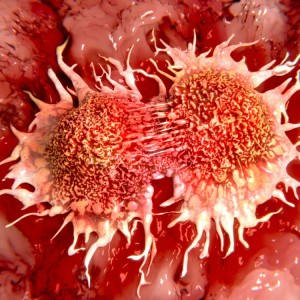 A new study entitled “SNAIL-induced epithelial-to-mesenchymal transition produces concerted biophysical changes from altered cytoskeletal gene expression” identified that epithelial-to-mesenchymal transition changes cells’ biophysical properties, imprinting a more invasive and aggressive profile, independently of cues from their surroundings. The study was published in the Journal of the Federation of American Societies for Experimental Biology (FASEB).
A new study entitled “SNAIL-induced epithelial-to-mesenchymal transition produces concerted biophysical changes from altered cytoskeletal gene expression” identified that epithelial-to-mesenchymal transition changes cells’ biophysical properties, imprinting a more invasive and aggressive profile, independently of cues from their surroundings. The study was published in the Journal of the Federation of American Societies for Experimental Biology (FASEB).
Cancer metastasis, defined as the spread of cancer cells to other body parts, away from the primary-tumor location, is the phenomenon responsible for the majority of cancer-associated deaths. This process requires the transition of less motile epithelial cells to elongated invasive mesenchymal cells.
While some of the molecular switches responsible for the transition were already identified, in this study the authors studied the biophysical properties that allows cells to disseminate more easily. Previously, the same team of researchers found that cancer cells behave differently according to the biophysical properties of their surroundings, with some cells performing more invasively in softer tissues (the authors found this to be the case for ovarian cancer cells), while other cancers exhibit an opposite behaviour, becoming more invasive in stiffer tissues.
In this study, the authors used epithelial MCF7 breast cancer cells and induced their transition from an epithelial to a mesenchymal state by overexpressing a gene called Snail. They found this molecular switch was sufficient to promote cell softening, rendering them the ability to easily spread to other body locations.
[adrotate group=”3″]
Notably, the authors found that the expression of SNAIL was capable of overcoming the biophysical properties of their surroundings. In collaboration with John McDonald, a professor in the School of Biology at Georgia Tech, they performed microarray analysis to identify the downstream genes regulated by SNAIL. They found the mesenchymal-like properties of SNAIL expressing cells had changes in their gene expression in agreement with previous reports of other models of epithelial-to-mesenchymal transition. While this property allows cells to evade the primary tumor location and reach other body parts, to be able to colonize a secondary location cells need to revert back into an epithelial state.
Overall, the authors showed that the biophysical properties of metastatic cells are mediated directly by the epithelial-to-mesenchymal transition and can perform independently of signals encountered in their surroundings. The authors hope this study will contribute to the development of new potential therapeutic approaches to block cancer progression and metastasis.
As Daniel McGrail, director of the Integrated Cancer Research Center at Georgia Tech and study leading author noted in a news release, “We think this work has great potential to lead to a new approach to cancer therapeutics.”

